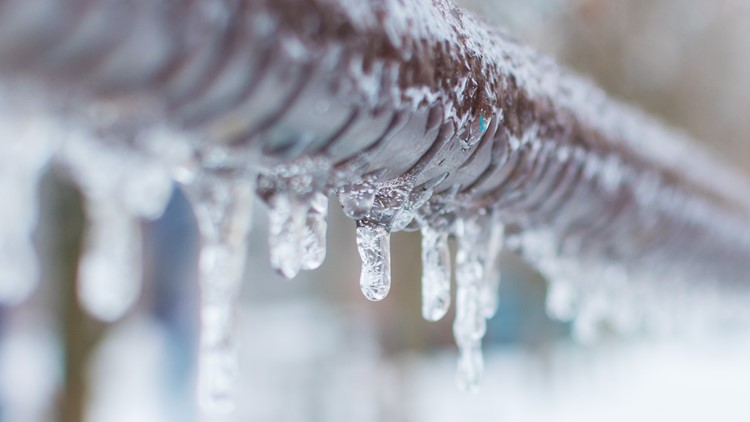Safeguarding Your Pipes from Freezing Issues: Critical Strategies
Safeguarding Your Pipes from Freezing Issues: Critical Strategies
Blog Article
Presented here down the page you can locate a lot of high-quality information and facts in regards to Prevent Frozen Pipes .
.jpg)
Cold weather can wreak havoc on your pipes, especially by freezing pipelines. Here's how to stop it from occurring and what to do if it does.
Introduction
As temperature levels decrease, the threat of frozen pipelines boosts, potentially leading to costly fixings and water damages. Comprehending how to avoid frozen pipes is essential for home owners in cold climates.
Prevention Tips
Protecting prone pipelines
Cover pipelines in insulation sleeves or utilize warm tape to safeguard them from freezing temperatures. Focus on pipes in unheated or outside locations of the home.
Home heating strategies
Keep interior areas adequately warmed, particularly areas with pipes. Open closet doors to allow cozy air to circulate around pipelines under sinks.
Exactly how to identify icy pipelines
Search for lowered water flow from taps, unusual odors or sounds from pipelines, and visible frost on revealed pipes.
Long-Term Solutions
Structural changes
Think about rerouting pipelines away from exterior walls or unheated locations. Include extra insulation to attics, basements, and crawl spaces.
Upgrading insulation
Buy high-grade insulation for pipelines, attic rooms, and wall surfaces. Appropriate insulation aids maintain consistent temperatures and reduces the threat of icy pipes.
Shielding Outside Plumbing
Yard tubes and outside taps
Detach and drain pipes garden tubes before winter months. Set up frost-proof faucets or cover outdoor taps with insulated caps.
Recognizing Frozen Pipelines
What causes pipes to ice up?
Pipelines freeze when subjected to temperature levels below 32 ° F (0 ° C) for extended periods. As water inside the pipelines freezes, it expands, putting pressure on the pipeline wall surfaces and possibly causing them to burst.
Risks and damages
Frozen pipes can cause supply of water interruptions, property damage, and expensive repair work. Burst pipelines can flooding homes and create considerable architectural damage.
Indications of Frozen Pipeline
Determining icy pipelines early can avoid them from rupturing.
What to Do If Your Pipelines Freeze
Immediate actions to take
If you think frozen pipes, keep faucets open up to relieve pressure as the ice thaws. Make use of a hairdryer or towels soaked in warm water to thaw pipes gradually.
Conclusion
Preventing icy pipes calls for positive actions and quick actions. By understanding the causes, indicators, and preventive measures, house owners can protect their plumbing during winter.
6 Proven Ways to Prevent Frozen Pipes and Protect Your Home
Disconnect and Drain Garden Hoses
Before winter arrives, start by disconnecting your garden hoses and draining any remaining water. Close the shut-off valves that supply outdoor hose bibs and leave the outdoor faucet open to allow any residual water to drain. For extra protection, consider using faucet covers throughout the colder months. It’s also important to drain water from any sprinkler supply lines following the manufacturer’s directions.
Insulate Exposed Pipes
Insulating your pipes is an effective way to prevent freezing. Pipe insulation is readily available at home improvement stores and is relatively inexpensive. Pay close attention to pipes in unheated areas such as the attic, basement, crawl spaces, or garage. Apply foam insulation generously to create a buffer against the cold. You can also wrap your pipes in heat tape or thermostat-controlled heat cables for added warmth.
Seal Air Leaks
Inspect your home for any cracks or openings that could let in cold air. Seal any holes around the piping in interior or exterior walls, as well as the sill plates where your home rests on its foundation. Additionally, make sure to keep your garage door closed unless you’re entering or exiting. Leaving it open creates a significant air leak that can lead to frozen pipes.
Allow Warm Air Circulation
During cold snaps, it’s essential to allow warm air to circulate evenly throughout your home. Leave interior doors ajar to promote better airflow. Open kitchen and bathroom cabinets to help distribute heat consistently around the rooms. If you have small children or pets, be sure to remove any household chemicals or potentially harmful cleaners from open cabinets for safety.
Let Faucets Drip
A small trickle of water can make a big difference in preventing ice formation inside your pipes. When temperatures drop significantly, start a drip of water from all faucets served by exposed pipes. This continuous flow helps prevent the water from freezing. Additionally, running a few faucets slightly can relieve pressure inside the pipes, reducing the chances of a rupture if the water inside does freeze.
https://choateshvac.com/6-proven-ways-to-prevent-frozen-pipes-and-protect-your-home/

Do you appreciate more info about How to Prevent Your Pipes From Freezing? Put a remark below. We'd be glad to find out your thoughts about this entry. We hope to see you back again in the future. Those who liked our page kindly do not forget to share it. Thanks for taking the time to read it.
Get A Quote Report this page